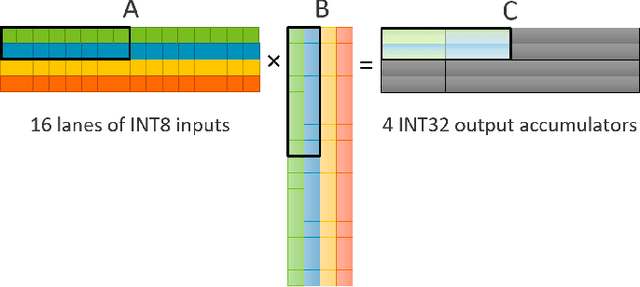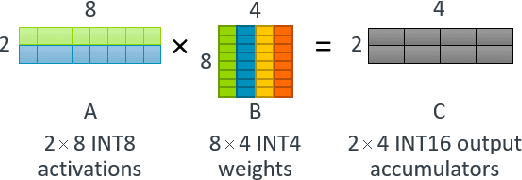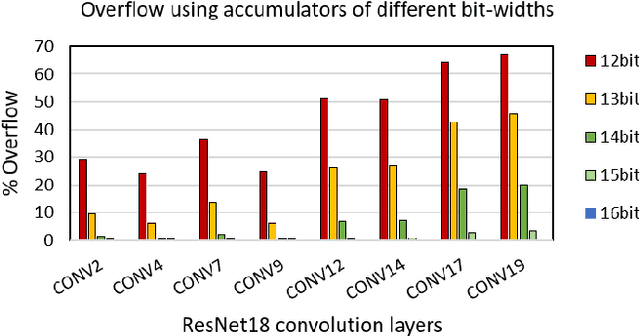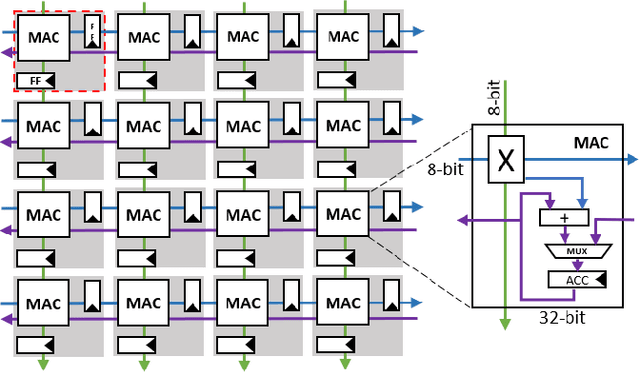High Throughput Matrix-Matrix Multiplication between Asymmetric Bit-Width Operands
Paper and Code
Aug 03, 2020



Matrix multiplications between asymmetric bit-width operands, especially between 8- and 4-bit operands are likely to become a fundamental kernel of many important workloads including neural networks and machine learning. While existing SIMD matrix multiplication instructions for symmetric bit-width operands can support operands of mixed precision by zero- or sign-extending the narrow operand to match the size of the other operands, they cannot exploit the benefit of narrow bit-width of one of the operands. We propose a new SIMD matrix multiplication instruction that uses mixed precision on its inputs (8- and 4-bit operands) and accumulates product values into narrower 16-bit output accumulators, in turn allowing the SIMD operation at 128-bit vector width to process a greater number of data elements per instruction to improve processing throughput and memory bandwidth utilization without increasing the register read- and write-port bandwidth in CPUs. The proposed asymmetric-operand-size SIMD instruction offers 2x improvement in throughput of matrix multiplication in comparison to throughput obtained using existing symmetric-operand-size instructions while causing negligible (0.05%) overflow from 16-bit accumulators for representative machine learning workloads. The asymmetric-operand-size instruction not only can improve matrix multiplication throughput in CPUs, but also can be effective to support multiply-and-accumulate (MAC) operation between 8- and 4-bit operands in state-of-the-art DNN hardware accelerators (e.g., systolic array microarchitecture in Google TPU, etc.) and offer similar improvement in matrix multiply performance seamlessly without violating the various implementation constraints. We demonstrate how a systolic array architecture designed for symmetric-operand-size instructions could be modified to support an asymmetric-operand-sized instruction.
 Add to Chrome
Add to Chrome Add to Firefox
Add to Firefox Add to Edge
Add to Edge